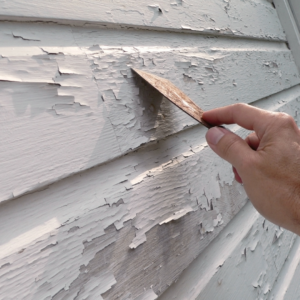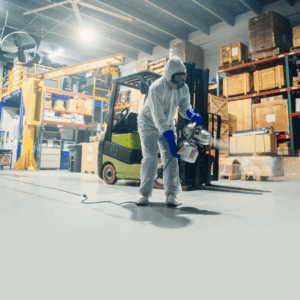How to Identify and Remove Lead Dust in Your Home
How to Identify and Remove Lead Dust in Your Home
Key Takeaways
- Identify Lead Dust Sources: Use test kits and inspect areas with old, peeling, or chipped paint, especially during renovations.
- Safety First in Removal: Employ protective gear such as HEPA filter masks and use sealed plastic sheeting to contain the area during clean-up.
- Proper Cleaning Techniques: Utilise HEPA-equipped vacuums followed by wet-wiping surfaces to effectively remove lead dust particles.
- Ongoing Prevention: Regularly clean and monitor the condition of painted surfaces to prevent the accumulation and exposure to lead dust.
- Professional Help: Seek professional remediation for extensive contamination or when dealing with multiple layers of old paint to ensure thorough and safe lead removal.
Summary
This article provides detailed guidance on identifying and safely removing lead dust from homes, emphasising the use of protective gear, HEPA-equipped vacuums, and wet-wiping methods to effectively remove lead dust. It highlights the importance of regular monitoring and maintenance of painted surfaces to prevent lead dust accumulation. For extensive contamination, it recommends professional remediation to ensure thorough and safe removal, safeguarding household health.
Understanding the Risks of Lead Dust
Lead dust is a perilous contaminant that can pose serious health risks, particularly in older homes where lead-based paints were commonly used until banned in 1978. Exposure to lead dust can result in a range of health issues, from cognitive impairments in children to cardiovascular problems in adults. Identifying and removing this toxic substance from your environment is crucial for maintaining a safe and healthy home.
Identifying Lead Dust in Your Home
Lead dust is fine and difficult to see with the naked eye. However, it often accumulates in places where paint is disturbed—around windows, doors, and old furniture. To effectively identify lead dust:
- Inspect your home: Look for areas with peeling or chipped paint, and observe any renovation areas that might have exposed old layers of paint.
- Use a lead dust test kit: These kits, available at most hardware stores, can detect the presence of lead on surfaces. Follow the instructions carefully to collect samples from suspected areas.
- Hire a professional: For a comprehensive assessment, consider hiring a certified lead abatement professional who can conduct a thorough inspection using advanced techniques.
Safe Practices to Remove Lead Dust
Removing lead dust requires careful handling to avoid contamination and exposure. Here are the steps to safely remove lead dust from your home:
- Seal off the area: Use plastic sheeting to seal off the room where lead dust removal will occur. This prevents the spread of lead particles to other parts of your home.
- Wear protective gear: Always wear gloves, a HEPA filter mask, and disposable overalls to remove lead dust. This gear protects you from inhaling or ingesting lead particles.
- Use the right cleaning tools: Employ a vacuum cleaner equipped with a HEPA filter to clean up lead particles effectively. Avoid using brooms or regular vacuums as they can spread the dust further.
- Wet-wiping surfaces: After vacuuming, use a damp mop or cloth to clean all surfaces. This method ensures that any remaining lead dust is picked up and not dispersed into the air.
- Properly dispose of waste: Dispose of all cleaning materials and protective gear in sealed bags to prevent recontamination.
Long-Term Prevention of Lead Dust
To prevent the recurrence of lead dust, it’s essential to maintain a vigilant approach:
- Regular cleaning: Conduct regular wet cleaning of floors, window frames, and other surfaces where lead dust could accumulate.
- Monitor paint condition: Keep an eye on painted surfaces for signs of wear or damage. Promptly address any peeling or chipping areas.
- Control home renovations: When renovating, ensure that any contractors are certified in lead-safe work practices. Contain and clean up all renovation areas meticulously.
When to Seek Professional Help
In cases where extensive lead contamination is suspected, or if your home has many layers of old paint, professional remediation may be necessary. Professionals have the tools and training to remove lead dust safely, ensuring that your home remains a safe environment for your family.
Managing lead dust effectively involves both diligent cleaning practices and an awareness of the potential sources of lead in your home. By following these guidelines, you can significantly reduce the risk of lead exposure and ensure a healthier living environment when needing to remove lead dust.
FAQs
What is lead dust and why is it dangerous?
Lead dust is comprised of tiny particles of lead that can be released from deteriorating lead-based paint or during activities like sanding or renovating older buildings. It’s dangerous because it poses serious health risks, especially to children and pregnant women, including developmental disorders and neurological damage.
How can I tell if there’s lead dust in my home?
Lead dust isn’t always visible to the naked eye. To determine if your home has lead dust, you can use lead dust test kits available at hardware stores, inspect areas where paint is deteriorating, or hire a certified professional to conduct a thorough inspection, and testing and effectively remove lead dust.
What should I do if I find lead dust in my home?
If you find lead dust, it’s important to take immediate steps to remove it safely. This includes using wet cleaning methods to avoid dispersing the dust, employing a vacuum with a HEPA filter, and wearing appropriate safety gear. For large-scale contamination, or if you are unsure about how to proceed safely, it is advisable to contact a professional who is trained in lead removal.
Why Choose Us?
AllAces Cleaning & Restoration has over 35 years of industry experience, able to remove lead dust across Brisbane, Sydney, Melbourne and surrounds. Our highly trained and certified technicians utilise the latest technology and equipment to ensure the restoration of a safe and habitable environment.


